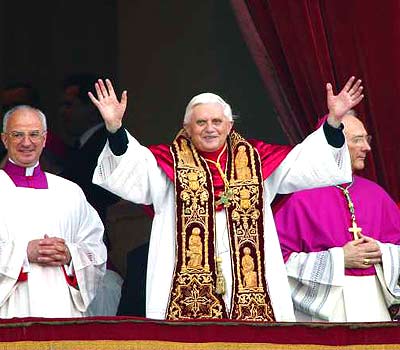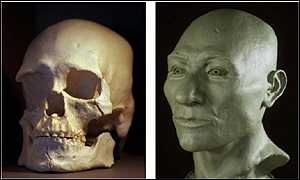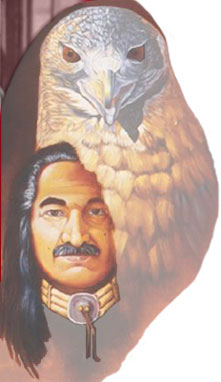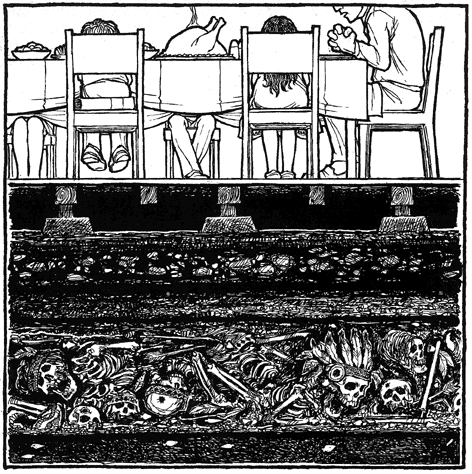As I said, Victor, Eric, Rebecca, and I
walked the Comic-Con floor Thursday, but our big adventure happened elsewhere.
In addition to the
Twilight panel at Comic-Con, the
Twilight people scheduled a series of Q&As at a nearby theater complex. Fans stood in line for hours...to buy tickets for $11 apiece...to see the actors up close. The dozen or so actors were split into two groups, I think. After a long wait, the fans were trotted into an empty theater to spend 7-8 minutes with group 1 and 7-8 minutes with group 2. (Not a good expense of time and money, if you ask me, but I'm not a
Twilight fan.)
Anyway,
Kiowa Gordon (Hualapai), one of the
New Moon Wolf Pack, decided to fly from Arizona at the last minute for these events. Only problem was, no one knew he was coming. So his mother called my pal Victor and asked if he could pick Kiowa up at the airport.
While Eric and I continued to wander the Con, Victor and Rebecca fetched the young wolf-man. We met at the Hard Rock Hotel downtown, where
Twilight had a hospitality suite. Saying we were Kiowa's "people," we escorted him to the 11th-floor room.
Into the Twilight worldThere a woman said she'd get us into the Q&A event. While Kiowa signed posters, we walked to the Pacific Theaters complex several blocks away. After some confusion and a break for ice cream, we finally got two tickets, two bracelets, and two staff passes. We still didn't know what was happening or what our passes were good for.
We returned to the Con to get the kids some
Big Lebowski and
Harry Potter souvenirs. Then we returned to Pacific Theaters for the third time. Whew...a lot of walking back and forth.
With our passes, the
Twilight people let us into the lobby. There we could view the
Nordstrom line of Twilight clothing or buy posters and tote bags while we waited.
Eventually the actors appeared from somewhere, paraded past us, and posed outside for the adoring crowd. We couldn't see this well from the lobby, but it looked crazy. Perhaps a thousand Twihards lined the street and screamed for Edward, Bella, and Jacob.
The actors returned and went upstairs. We talked to someone in charge and, using the "Kiowa's people" line again, followed them. We reached a closed-off theater with guards but, calling ourselves "Kiowa's family" this time, got in.
This theater was the "green room" where the actors waited between Q&A sessions. Everyone was there: Rob Pattinson in a baseball cap, Kristen Stewart looking like Joan Jett for an upcoming movie,
Taylor Lautner sitting way up in back with a buddy.
 Hanging with the stars
Hanging with the starsVictor and I and his two young charges sat at the far side of the theater by ourselves. I think we were the only "civilians" in the place. Everyone else was a
Twilight actor or support staff.
Eric and Rebecca got up the courage to ask the actors for autographs. The actors were polite and obliging, so the kids eventually scored 13 or so autographs each. Thirteen
Twilight autographs on a Comic-Con pass--that may be a record. Those passes may be valuable someday, if they aren't already.
Kiowa came over and hung with us for a while, so we learned he wants to start a band playing eclectic music. Victor traded a Joan Jett comment with Kristen Stewart, since she's doing a Jett biopic and Victor once worked with Jett's band. Eric went over to hang with some stars and was soon telling them about his favorite movie,
The Big Lebowski.
All in all we spent about two hours watching the
Twilight stars from our vantage point. It was a rare chance to observe Hollywood celebrities in their environment.
Again not knowing what was happening, we got to see a final Q&A session with the
Twilight actors, including Kiowa. We learned that the fans, who are about 90% girls, ask a lot of silly questions. I think someone mistook Kiowa for Taylor Lautner--because all Indians look alike? I think someone else asked him to take off his shirt.
Others asked if they could pose for a picture with the stars or get their autographs. That goes beyond silly to selfish and stupid in a room with hundreds of people who want the same thing. "Can I monopolize the stars' time while the rest of you spend your $11 watching me?" Uh, no.
Fleeing the sceneFinally the evening ended. The stars returned to the bus that brought them over and the Twihards, still waiting outside, screamed. Kiowa got his bag and came with us. We walked to Victor's car and nobody recognized Kiowa. (No doubt that'll change with the release of
New Moon.)
Because Kiowa had nowhere to stay, Victor volunteered to take him home and get him to the airport the next day. And that's where we parted. I gather Victor's wife and the kids enjoyed having that cute li'l wolf-boy to themselves for a day.
So that was our
Twilight adventure. We got to see the
Twilight phenomenon up close and personal from the Indian's-eye perspective. It's hard to imagine
lovesick girls fans going ga-ga over
Twilight until you see it.
To me it reinforced the point I've been making all along: that Indians should be involved in books or movies about Indians.
Twilight is a huge opportunity to spread the message that Indians are modern-day people who star in movies. And not a
vanishing breed found only on signs and postcards.
For more on the subject, see
Quileute Werewolves in Twilight.





























